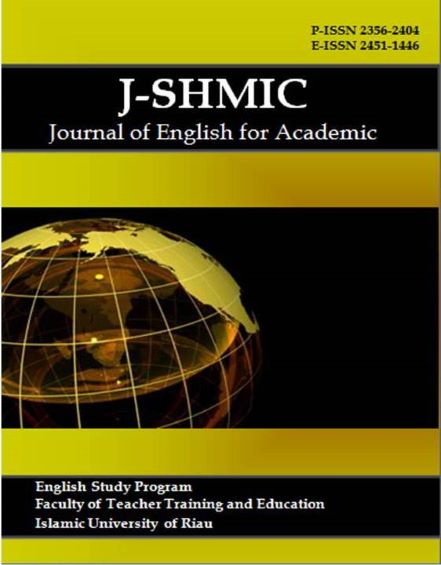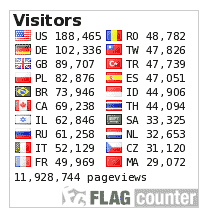A Video-Mediated EFL Learning: Highlighting Indonesian Students’ Voices
Keywords:
Video, EFL, Indonesian Students' VoicesAbstract
The emergence of videos as instructional media in the EFL learning contexts has provided meaningful values to learners’ learning experiences. There have been many studies investigated the effectiveness of the videos in EFL field. However, this study presents a gap in the literature regarding the acceptance of videos usages of Indonesian senior high school students who learn English as a foreign language. This study employed quantitative survey research by distributing a closed questionnaire to one hundred fifteen students from the tenth grade of a state senior high school. Overall, participants showed positive voices towards using videos to support their learning in terms of ease of use, learning opportunities, learning experience, and preferences. With regard to the actual use of videos in learning, most students spent at least 1-2 hours watching videos in and outside the classrooms. The availability of smartphones contributes significantly to ease video access. Moreover, social media networking, such as Youtube, Instagram, and WhatsApp, provides more video sources for the student. Amongst the video types enjoyed by the students, videos of interviews, tutorials, explanations, vlogs, profiles, and testimonials were their preferences.
Downloads
References
Anugerah, R., Gatot, Y., Yuliana, S., & Riyanti, D. (2019). the Potential of English Learning Videos in Form of Vlog on Youtube for Elt Material Writers. FKIP Universitas Tanjungpura, 2(2), 2685–1407. http://jurnal.untan.ac.id/index.php/icote/article/view/38232
Arifani, Y., Asari, S., Anwar, K., & Budianto, L. (2020). Individual or collaborative whatsapp learning? A flipped classroom model of efl writing instruction. Teaching English with Technology, 20(1), 122–139.
Bolliger, D. U., Mills, D., White, J., & Kohyama, M. (2015). Japanese students’ perceptions of digital game use for English-language learning in higher education. Journal of Educational Computing Research, 53(3), 384–408.
Brame, C. J. (2016). Effective educational videos: Principles and guidelines for maximizing student learning from video content. CBE Life Sciences Education, 15(4), es6.1-es6.6. https://doi.org/10.1187/cbe.16-03-0125
Farani, Y., & Yustisia, Karlina Karadila. (2019). Using Texts and Videos to Integratedly Teach Culture through Business English Of ESP 1 Subject. ISoLEC (International Seminar on Language Education and Culture, October.
Hadijah, S. (2016). Teaching by Using Video: Ways to Make it More Meaningful in EFL Classrooms. Proceedings of the Fourth International Seminar on English Language and Teaching ISELT-4, October, 307–315.
Harmer, J. (2007). The practice of English language teaching. Harlow. England: Pearson Education.
Hidalgo Rojas, M. E. (2021). Self-Assessing Students’ Videos to Improve Speaking Skills [Universidad Casa Grande. Departamento de Posgrado]. http://dspace.casagrande.edu.ec:8080/handle/ucasagrande/2672
Hidayati, A. N., Ramalia, T., & Abdullah, F. (2021). Leveraging Skype-based webinars as an English language learning platform. AL-ISHLAH: Jurnal Pendidikan, 13(1), 10–20. https://doi.org/10.35445/alishlah.v13i1.420
Kourieos, S. (2016). Video-mediated microteaching-A stimulus for reflection and teacher growth. Australian Journal of Teacher Education, 41(1), 65–80. https://doi.org/10.14221/ajte.2016v41n1.4
Lin, Y. J., & Wang, H. C. (2018). Using enhanced OER videos to facilitate English L2 learners’ multicultural competence. Computers and Education, 125(October 2017), 74–85. https://doi.org/10.1016/j.compedu.2018.06.005
Long, T., Logan, J., & Waugh, M. (2016). Students’ perceptions of the value of using videos as a pre-class learning experience in the flipped classroom. TechTrends, 60(3), 245–252.
Mahmoud Al-Zoubi, S. (2018). The Impact of Exposure to English Language on Language Acquisition. Journal of Applied Linguistics and Language Research, 5(4), 151–162. www.jallr.com
Martin, F., Dennen, V. P., & Bonk, C. J. (2020). A synthesis of systematic review research on emerging learning environments and technologies. Educational Technology Research and Development, 68(4), 1613–1633. https://doi.org/10.1007/s11423-020-09812-2
Masats, D., & Dooly, M. (2011). Rethinking the use of video in teacher education: A holistic approach. Teaching and Teacher Education, 27(7), 1151–1162. https://doi.org/10.1016/j.tate.2011.04.004
McHugh, M., & McCauley, V. (2020). By Hook or by Crook: Designing Physics Video Hooks with a Modified ADDIE Framework. Journal of Applied Instructional Design, 9(3), 1–13. https://doi.org/10.51869/93mmhvmc
Mete, D. E. (2020). Fostering critical thinking skills in ELT through video-based reflection. Journal of Language and Linguistic Studies, 16(1), 104–125. https://doi.org/10.17263/JLLS.712662
Ou, C., Joyner, D. A., & Goel, A. K. (2019). Designing and developing video lessons for online learning: A seven-principle model. Online Learning Journal, 23(2), 82–104. https://doi.org/10.24059/olj.v23i2.1449
Pirhonen, J., & Rasi, P. (2017). Student-generated instructional videos facilitate learning through positive emotions. Journal of Biological Education, 51(3), 215–227.
S, J. P. (2021). Video Based Learning as a Media for Teaching English during Pandemic Covid-19. Journal of Language Intelligence and Culture, 2(1), 1–11. https://doi.org/10.35719/jlic.v2i1.53
Sagadavan, R., & John, S. (2019). Learning preferences transformation in tertiary education. International Journal of Recent Technology and Engineering, 8(2 Special Issue), 215–220.
Saud Albahlal, F. (2019). The Impact of YouTube on Improving Secondary School Students’ Speaking Skills: English Language Teachers’ Perspectives. Journal of Applied Linguistics and Language Research, 6(2), 1–17. www.jallr.com
Serdar Tülüce, H., & Çeçen, S. (2018). The use of video in microteaching: affordances and constraints. ELT Journal, 72(1), 73–82. https://doi.org/10.1093/elt/ccx028
Wang, Z. (2014). An Analysis on the Use of Video Materials in College English Teaching in China. International Journal of English Language Teaching, 2(1), 23–28. https://doi.org/10.5430/ijelt.v2n1p23
Widodo, H. P., & Rozak, R. R. (2016). Engaging Student Teachers in Collaborative and Reflective Online Video-Assisted Extensive Listening in an Indonesian Initial Teacher Education (ITE) Context. Electronic Journal of Foreign Language Teaching, 13(2), 229–244.
Zıngır Gülten, A. (2017). Trainees’ perceptions of video use in English language teaching: Digital natives’ turn. International Journal of Social Sciences and Education Research, 3(1), 250–250. https://doi.org/10.24289/ijsser.271023
Published
How to Cite
Issue
Section
This is an open-access article distributed under the terms of the Creative Commons Attribution-ShareAlike 4.0 International License which permits unrestricted use, distribution, and reproduction in any medium. Users are allowed to read, download, copy, distribute, search, or link to full-text articles in this journal without asking by giving appropriate credit, providing a link to the license, and indicating if changes were made. All of the remixes, transform, or build upon the material must distribute the contributions under the same license as the original.











